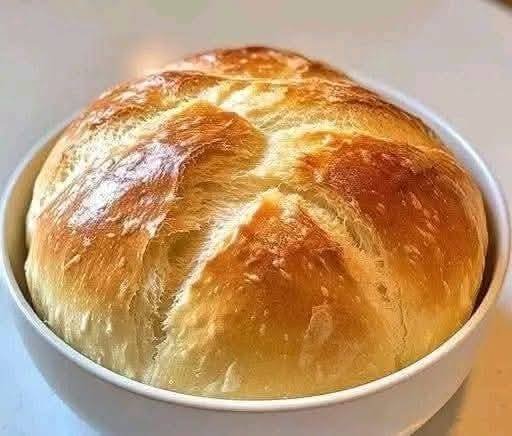Few things in the kitchen bring as much comfort and satisfaction as the smell of freshly baked bread wafting through the air. Baking bread at home may seem intimidating at first, but once you understand the process, it becomes one of the most rewarding culinary experiences. Homemade bread is wholesome, customizable, and far superior in taste to most store-bought loaves. Today, I’ll share a simple yet foolproof recipe for classic homemade bread along with tips to ensure success every time.
Ingredients
To make one large loaf of homemade bread, you’ll need:
-
4 cups all-purpose flour (plus extra for kneading)
-
1 packet (2 ¼ teaspoons) active dry yeast
-
1 ½ cups warm water (around 110°F or 45°C)
-
2 tablespoons sugar or honey (for a hint of sweetness and to feed the yeast)
-
2 tablespoons olive oil or melted butter
-
2 teaspoons salt
Optional additions:
-
1 tablespoon milk powder (for softer bread)
-
Seeds (sesame, poppy, flax) for topping
-
Herbs or garlic for flavor
Step 1: Activate the Yeast
Start by proofing the yeast, which ensures it’s alive and ready to help the bread rise. In a medium bowl, mix warm water with the sugar or honey. Sprinkle the yeast on top and let it sit for about 5–10 minutes. You should see it become frothy and bubbly. If it doesn’t, your yeast may be expired, or the water was too hot or too cold, so try again with fresh yeast.
Step 2: Mix the Dough
In a large mixing bowl, combine the flour and salt. Make a well in the center and pour in the yeast mixture along with olive oil or melted butter. Using a wooden spoon or your hands, mix until a sticky dough begins to form. At this stage, don’t worry if it looks rough—it will come together during kneading.
Step 3: Knead the Dough
Transfer the dough onto a lightly floured surface and knead for about 8–10 minutes. Kneading helps develop gluten, the protein that gives bread its structure and chewiness. Push the dough away with the heel of your hand, fold it back over itself, rotate slightly, and repeat. After a few minutes, you’ll notice the dough becoming smoother and more elastic.
Tip: If the dough feels too sticky, sprinkle in a little more flour. Be careful not to add too much, or your bread may turn out dense.
Step 4: First Rise
Form the kneaded dough into a ball and place it in a lightly oiled bowl, turning it once to coat the surface with oil. Cover the bowl with a damp cloth or plastic wrap and let it rise in a warm spot for about 1 to 1 ½ hours, or until it doubles in size. The rising process, known as fermentation, is where the yeast works its magic by producing gas that makes the dough expand.
Step 5: Shape the Loaf
Once the dough has doubled in size, punch it down gently to release the trapped air. Transfer it to a floured surface and shape it into a loaf. You can either roll it tightly into a cylinder to place in a greased loaf pan or keep it as a rustic free-form round loaf to bake on a baking sheet. If you like, sprinkle seeds or oats on top for extra flavor and crunch.
Step 6: Second Rise
Cover the shaped dough loosely and let it rise again for 30–40 minutes. This second rise, also called proofing, allows the bread to develop better texture and volume. The dough should puff up and become airy but not collapse.
Step 7: Bake the Bread
Preheat your oven to 375°F (190°C). Place the loaf in the oven and bake for 25–30 minutes, or until golden brown on top. A good way to test if bread is done is to tap the bottom—it should sound hollow. You can also use a thermometer; the internal temperature should be around 190–200°F (88–93°C).
Step 8: Cool and Serve
Resist the temptation to slice into the bread immediately! Cooling is an important final step that allows the inside to finish cooking and prevents it from becoming gummy. Let the loaf rest on a wire rack for at least 20–30 minutes before slicing.
Serve your homemade bread with butter, jam, cheese, or use it for sandwiches. It’s versatile, satisfying, and makes every meal feel special.
Tips for Success
-
Use the right flour – All-purpose flour works well, but bread flour gives a chewier texture and better rise.
-
Control water temperature – Too hot will kill the yeast; too cold won’t activate it. Aim for lukewarm water.
-
Don’t rush rising times – Good bread takes patience. Allow enough time for fermentation to develop flavor.
-
Store properly – Wrap cooled bread in a clean towel or airtight container. It stays fresh for 2–3 days at room temperature, or you can freeze slices for longer storage.
-
Experiment – Add nuts, dried fruit, herbs, or cheese for unique variations.
Conclusion
Baking homemade bread is both an art and a science, but once you’ve mastered the basics, it becomes second nature. With just a few simple ingredients—flour, water, yeast, salt, and a touch of patience—you can create a warm, golden loaf that rivals anything from the bakery. Not only does homemade bread fill your home with irresistible aroma, but it also delivers unmatched freshness and flavor. The next time you’re craving a slice of comfort, try this recipe and enjoy the simple pleasure of bread made with your own hands.
